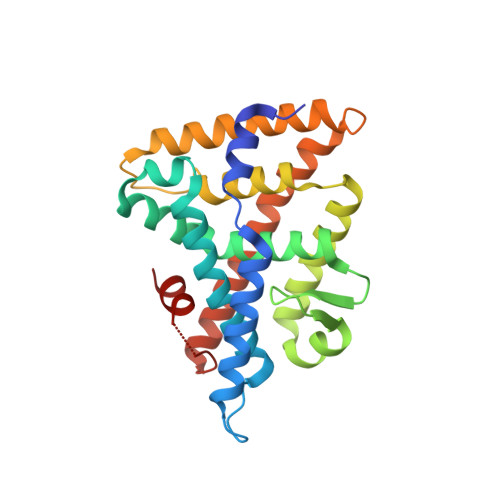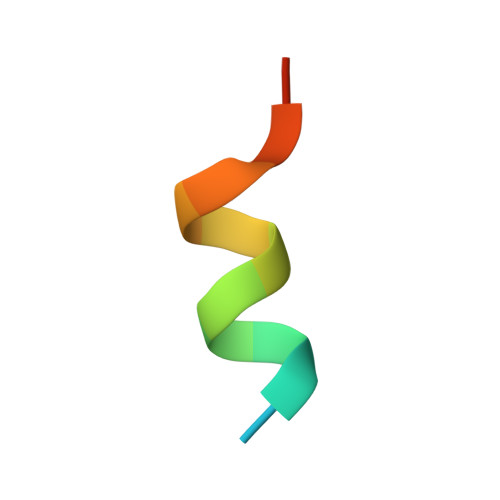Crystal Structures of the Nuclear Receptor, Liver Receptor Homolog 1, Bound to Synthetic Agonists.
Mays, S.G., Okafor, C.D., Whitby, R.J., Goswami, D., Stec, J., Flynn, A.R., Dugan, M.C., Jui, N.T., Griffin, P.R., Ortlund, E.A.(2016) J Biol Chem 291: 25281-25291
- PubMed: 27694446
- DOI: https://doi.org/10.1074/jbc.M116.753541
- Primary Citation of Related Structures:
5L11, 5SYZ - PubMed Abstract:
Liver receptor homolog 1 (NR5A2, LRH-1) is an orphan nuclear hormone receptor that regulates diverse biological processes, including metabolism, proliferation, and the resolution of endoplasmic reticulum stress. Although preclinical and cellular studies demonstrate that LRH-1 has great potential as a therapeutic target for metabolic diseases and cancer, development of LRH-1 modulators has been difficult. Recently, systematic modifications to one of the few known chemical scaffolds capable of activating LRH-1 failed to improve efficacy substantially. Moreover, mechanisms through which LRH-1 is activated by synthetic ligands are entirely unknown. Here, we use x-ray crystallography and other structural methods to explore conformational changes and receptor-ligand interactions associated with LRH-1 activation by a set of related agonists. Unlike phospholipid LRH-1 ligands, these agonists bind deep in the pocket and do not interact with residues near the mouth nor do they expand the pocket like phospholipids. Unexpectedly, two closely related agonists with similar efficacies (GSK8470 and RJW100) exhibit completely different binding modes. The dramatic repositioning is influenced by a differential ability to establish stable face-to-face π-π-stacking with the LRH-1 residue His-390, as well as by a novel polar interaction mediated by the RJW100 hydroxyl group. The differing binding modes result in distinct mechanisms of action for the two agonists. Finally, we identify a network of conserved water molecules near the ligand-binding site that are important for activation by both agonists. This work reveals a previously unappreciated complexity associated with LRH-1 agonist development and offers insights into rational design strategies.
Organizational Affiliation:
From the Department of Biochemistry, Emory University School of Medicine, and.
















